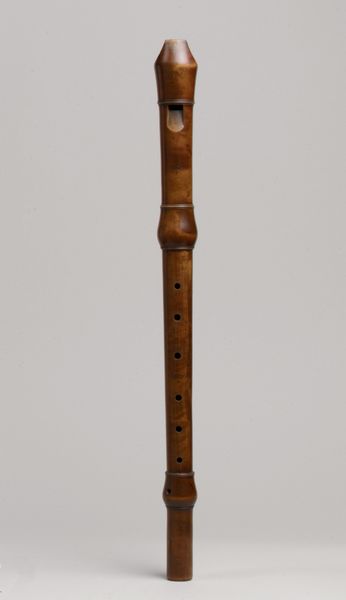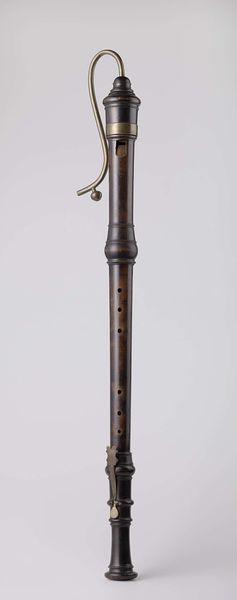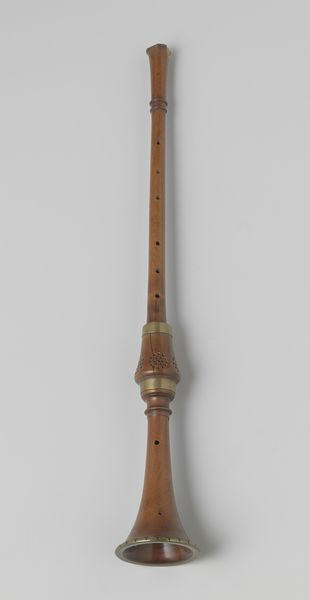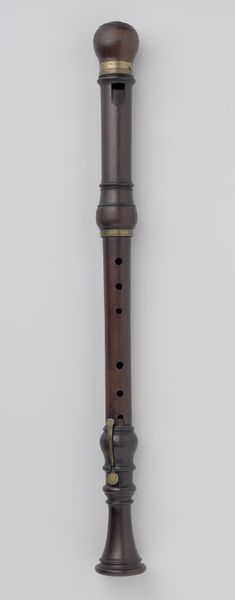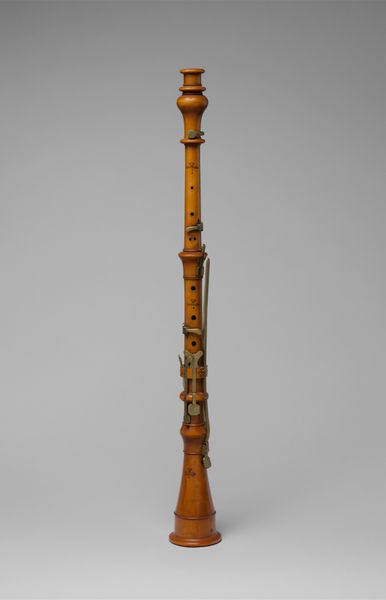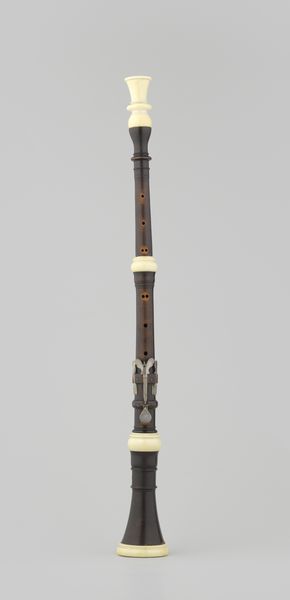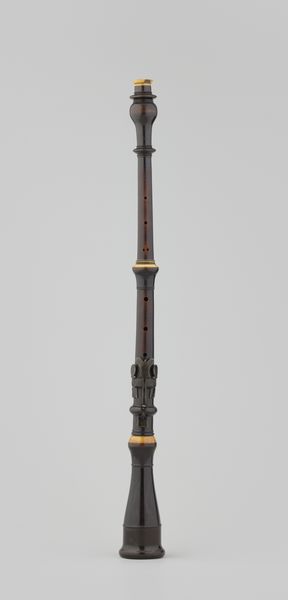
metal, wood
#
medieval
#
metal
#
wood
#
decorative-art
Dimensions: length 36 cm, diameter 4 cm
Copyright: Rijks Museum: Open Domain
Engelbert Terton crafted this discant recorder in the 18th century from wood and metal. Its cylindrical form, punctuated by precisely placed holes, evokes a lineage stretching back to the earliest flutes of antiquity. Consider the myth of Pan, whose pipes lured nymphs with melodies both enchanting and unsettling. The recorder, like Pan's pipes, embodies a duality: its music can soothe and civilize, yet also stir primal emotions. The circular holes, repeated along its body, resonate with the ancient symbolism of the circle, representing wholeness and continuity. We see this form echoed in the design of ancient Greek auloi or the flutes depicted in Renaissance pastoral scenes. The impulse to create music through breath and precisely placed openings is a recurring motif, transcending time and culture. Each note played on this recorder carries echoes of forgotten rituals and communal gatherings, a testament to the enduring power of music to bind us to our past.
Comments
No comments
Be the first to comment and join the conversation on the ultimate creative platform.
